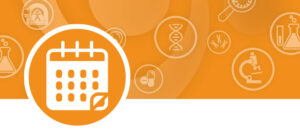Understanding Social Inequalities to Improve the Care of Disadvantaged Patients
This is the goal set by Florence Molinié and her team at the Loire-Atlantique/Vendée Cancer Registry for this new project under the SIRIC initiative. The research published by Claire Delacôte in the prestigious British Journal of Cancer sheds light on the critical issues surrounding this topic.
In women, breast cancer is the most common cancer and the leading cause of cancer-related deaths¹. In recent years, thanks to improvements in therapeutic and diagnostic care (notably the implementation of an organized screening program for women aged 50-74), breast cancer prognosis has improved. However, social inequalities persist.
Two previous French studies², which included several French cancer registries, including the Loire-Atlantique/Vendée Cancer Registry, directed by Florence Molinié, have shown that social inequalities have an impact on breast cancer outcomes:
“Disadvantaged patients have poorer survival rates than other patients.”— Claire Delacôte, Epidemiology Researcher
One reason that might explain this phenomenon is the stage of the disease at diagnosis. Disadvantaged individuals tend to be diagnosed later, at a more advanced stage, which inevitably affects the prognosis of the disease.
A Better Understanding of These Social Inequalities: A Unique Study in France
But are these inequalities solely due to the stage of the disease at diagnosis? Does the effect of deprivation still exist after accounting for the stage at diagnosis? These are the questions that Claire Delacôte, an epidemiology researcher, and the Registry team have tried to answer.
“This is an unprecedented study in France; we are among the first to be able to study this issue in such detail.”— Claire Delacôte
The Loire-Atlantique/Vendée Cancer Registry…
To carry out this study, Claire was able to rely on the strengths of the Loire-Atlantique/Vendée Cancer Registry. The Registry records, on an ongoing and comprehensive basis, all newly diagnosed cancers in residents of the Loire-Atlantique and Vendée departments at the time of diagnosis through a network of public and private partners. As a result, the data collected is high-quality, exhaustive, and unbiased. This is made possible thanks to a multidisciplinary team of data entry technicians, investigators, statisticians, researchers, and doctors, who ensure the smooth running of the process. Claire used anonymized data from over 12,000 women diagnosed with breast cancer between 2008 and 2015, including the stage of the disease at diagnosis, the mode of diagnosis, and socioeconomic level.
…Provides Initial Answers
The initial results of this study indicate that the survival differences observed in disadvantaged patients can be partly explained by the stage at diagnosis, but not entirely.
“Even if we adjust survival for the stage at diagnosis (to eliminate the effects of the stage), there are still unexplained survival differences between disadvantaged patients and those who are not.”— Claire Delacôte
To put it simply, the stage explains part of the inequalities in prognosis at diagnosis, and another part is explained by other factors that remain to be identified.
“Many factors can influence the prognosis of the disease. All are intertwined, which makes studies more complex.”— Claire Delacôte
It is difficult to pinpoint precisely the factors involved using the data collected by the Registry:
“The Registry data does not include patients’ personal characteristics (lifestyle habits, other illnesses in addition to cancer, social support, professional activity, etc.), nor the data on access to and availability of healthcare services in certain areas, which could play a role.”— Claire Delacôte
Understanding These Inequalities: To Improve the Support of Disadvantaged Patients
This study, although it does not explain everything, has provided some initial answers. While the Registry data alone cannot go further, cross-referencing it with other databases, such as the SNDS (National Health Data System), could help determine whether other diseases and differences in healthcare access and services can explain part of the inequalities observed and yet unexplained.
The real challenge of this research lies in the development of interventions (such as mobile mammography units) and tailored support for disadvantaged patients.
“Our role is to inform and alert public stakeholders to support these women and improve their survival.”— Claire Delacôte
1 Santé Publique France – http://www.santepubliquefrance.fr/
2 “Socioeconomic environment and disparities in cancer survival for 19 solid tumor sites: An analysis of the French Network of Cancer Registries (FRANCIM)”, Laure Tron and colleagues, IJC, 2019
“How do age and social environment affect the dynamics of death hazard and survival in patients with breast or gynecological cancer in France?”, Marie Poiseuil and colleagues, IJC, 2021
Read the publication: British Journal of Cancer



